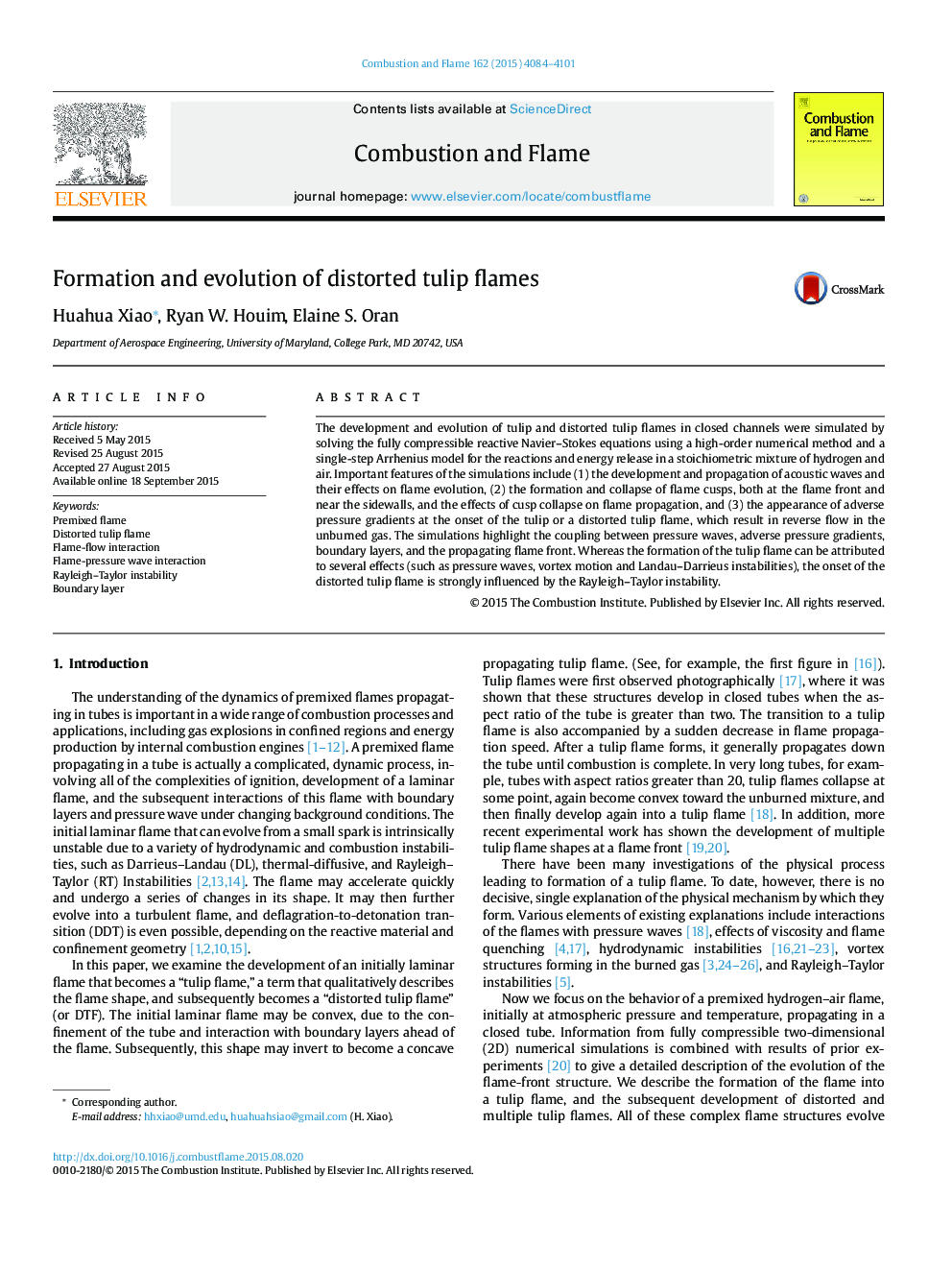| کد مقاله | کد نشریه | سال انتشار | مقاله انگلیسی | نسخه تمام متن |
|---|---|---|---|---|
| 10264355 | 457804 | 2015 | 18 صفحه PDF | دانلود رایگان |
عنوان انگلیسی مقاله ISI
Formation and evolution of distorted tulip flames
ترجمه فارسی عنوان
شکل گیری و تکامل شعله های لعاب تحریف شده
دانلود مقاله + سفارش ترجمه
دانلود مقاله ISI انگلیسی
رایگان برای ایرانیان
کلمات کلیدی
شعله پیش ساخته شعله تلالو تحریف شده، تعامل شعله و جریان، تعامل موج موج شعله، رلیه بی ثباتی تیلور، لایه مرزی،
ترجمه چکیده
توسعه و تکامل شعله های لعاب لاله و تحریف شده در کانال های بسته شده با حل معادلات ناییر استوکس واکنش پذیر به طور کامل فشرده سازی با استفاده از یک روش عددی مرتبه بالا و یک مدل آرنینیوس تک مرحله ای برای واکنش ها و انتشار انرژی در یک مخلوط استوکیومتری هیدروژن و هوا. ویژگی های مهم شبیه سازی عبارتند از: (1) توسعه و انتشار امواج صوتی و تأثیر آنها بر تکامل شعله، (2) شکل گیری و فروپاشی شعله های آتش، هم در جلوی شعله و هم در نزدیکی ستون ها و هم در اثر فروپاشی کاسپ در مورد انتشار شعله و (3) ظهور گرادیان فشار جانبی در شروع لاله یا شعله ی لعاب تحریف شده که منجر به جریان معکوس در گاز نشده می شود. شبیه سازی اتصالات بین امواج فشار، گرادیان فشار جانبی، لایه های مرزی و جلوی شعله پخش را برجسته می کند. در حالی که شکل گیری شعله ی لعاب می تواند به اثرات متعددی (مانند امواج فشار، حرکت گردابی و ناپایداری های لاندو-داریه) نسبت داده شود، شروع شعله ی لعاب تحریف شده به شدت تحت تاثیر بی ثباتی ریلی تیلور قرار دارد.
موضوعات مرتبط
مهندسی و علوم پایه
مهندسی شیمی
مهندسی شیمی (عمومی)
چکیده انگلیسی
The development and evolution of tulip and distorted tulip flames in closed channels were simulated by solving the fully compressible reactive Navier-Stokes equations using a high-order numerical method and a single-step Arrhenius model for the reactions and energy release in a stoichiometric mixture of hydrogen and air. Important features of the simulations include (1) the development and propagation of acoustic waves and their effects on flame evolution, (2) the formation and collapse of flame cusps, both at the flame front and near the sidewalls, and the effects of cusp collapse on flame propagation, and (3) the appearance of adverse pressure gradients at the onset of the tulip or a distorted tulip flame, which result in reverse flow in the unburned gas. The simulations highlight the coupling between pressure waves, adverse pressure gradients, boundary layers, and the propagating flame front. Whereas the formation of the tulip flame can be attributed to several effects (such as pressure waves, vortex motion and Landau-Darrieus instabilities), the onset of the distorted tulip flame is strongly influenced by the Rayleigh-Taylor instability.
ناشر
Database: Elsevier - ScienceDirect (ساینس دایرکت)
Journal: Combustion and Flame - Volume 162, Issue 11, November 2015, Pages 4084-4101
Journal: Combustion and Flame - Volume 162, Issue 11, November 2015, Pages 4084-4101
نویسندگان
Huahua Xiao, Ryan W. Houim, Elaine S. Oran,
